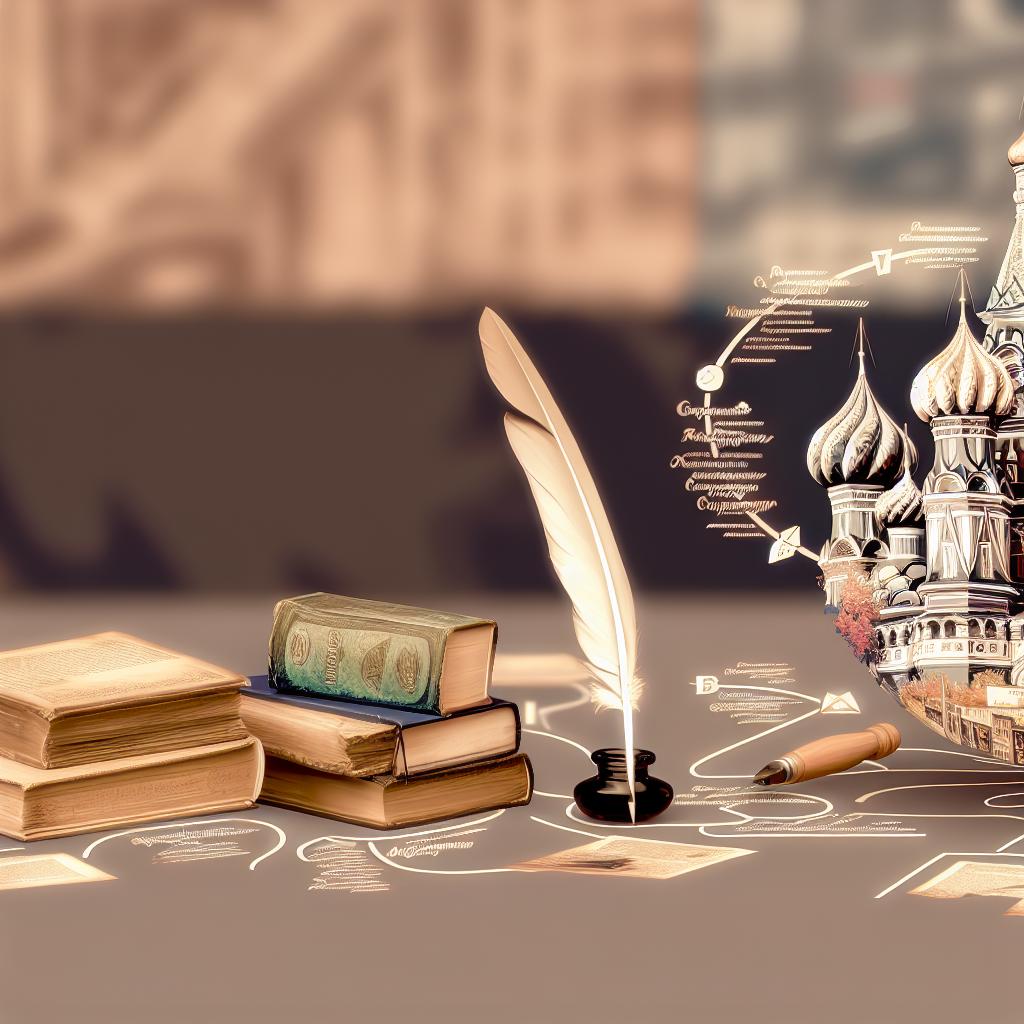Moscow as a Crucial Setting in Russian Literature
Moscow has long held a pivotal role in Russian literature, serving as a backdrop for numerous works that explore the social, political, and cultural landscapes of the country. This article delves into the influence of Moscow on Russian literature and examines how the city is woven into key literary works from different eras.
Moscow in 19th-Century Literature
In the 19th century, Moscow was often portrayed in literature as a city that embodied tradition and the essence of Russian culture. Authors of this era frequently chose Moscow as a primary setting to contrast the old-world charm with the rapidly modernizing St. Petersburg. This period saw the emergence of several notable works that depicted Moscow in various lights.
War and Peace by Leo Tolstoy presents Moscow as a crucial setting in this epic narrative, symbolizing the very heart of Russia. Tolstoy uses the city to juxtapose grandeur with decay, illustrating the decline of the old Russian aristocracy while highlighting the city’s resilience and spirit.
Similarly, Anna Karenina by Leo Tolstoy portrays Moscow as a hub of social activity, where personal lives intertwine with broader societal issues. The city becomes a backdrop for the complex relationships and societal norms that Tolstoy explores, emphasizing the intersection of tradition and change.
While not entirely set in Moscow, The Brothers Karamazov by Fyodor Dostoevsky reflects on the philosophical and religious debates prevalent in Russia, with Moscow symbolizing the country’s spiritual and moral center. The city’s influence permeates the narrative, portraying it as the heart of Russia’s moral dilemmas and cultural discourse.
Moscow in Soviet Literature
During the Soviet era, the depiction of Moscow in literature shifted to align with the new political ideology and societal changes. Soviet authors examined the city’s pivotal role in promoting communism and driving industrial advancements.
Moscow-Petushki by Venedikt Yerofeyev offers a satirical perspective on Moscow and the Soviet Union, portraying the city as a place of disillusionment and absurdity amidst the overwhelming bureaucracy. The novel critiques the Soviet system through its depiction of Moscow, highlighting the disconnect between the official narrative and the everyday reality faced by its inhabitants.
In contrast, Master and Margarita by Mikhail Bulgakov is set largely in Moscow, where the author critiques the Soviet regime. Bulgakov skillfully juxtaposes the mundane reality of Soviet life with fantastical elements, presenting Moscow as a microcosm of contradictions. The city becomes a stage for surreal events that reflect the complexities of Soviet existence.
Moscow in Post-Soviet Literature
In the post-Soviet period, Russian literature continued to explore Moscow’s complexities, reflecting on its transformation and the challenges it faces in modern times.
Day of the Oprichnik by Vladimir Sorokin is set in a dystopian future, using Moscow to delve into themes of authoritarianism and control. The novel mirrors historical patterns within Russian governance, using the city as a canvas for exploring the cyclical nature of power and suppression.
Meanwhile, The Winter Queen by Boris Akunin is a mystery novel that revisits Moscow’s Imperial past, capturing the intrigue and shifting social dynamics within the city. Akunin blends historical fiction with detective elements, using Moscow as a backdrop to explore the complexities of Russian identity and society during a transformative period.
Moscow as a Reflection of Russian Identity
Throughout these various periods, Moscow has served not only as a setting but also as a character in its own right, embodying the dynamic nature of Russian society. The city symbolizes a confluence of old traditions and new ideologies, mirroring the nation’s identity and evolution. Its depiction in literature underscores the tensions and transitions that have defined Russian history.
From the grandeur of the 19th century to the ideological battles of the Soviet era, and finally to the complexities of post-Soviet reality, Moscow has been consistently represented as a vibrant and multifaceted setting. The city adapts and evolves, much like the narratives that unfold within its bounds. As Russian literature continues to develop, Moscow remains a central figure, offering writers a rich tapestry of themes and settings to explore.
Conclusion
Moscow’s role in Russian literature is both prominent and multifaceted, providing readers with insight into the cultural and societal shifts that have shaped the nation. Its depiction in various literary works showcases the city as a focal point of Russian life, serving as a powerful symbol within the rich tapestry of Russian literary tradition. As new generations of writers engage with the historical and contemporary realities of Moscow, the city will undoubtedly continue to inspire and provoke, reflecting the ongoing evolution of Russian identity and thought.

